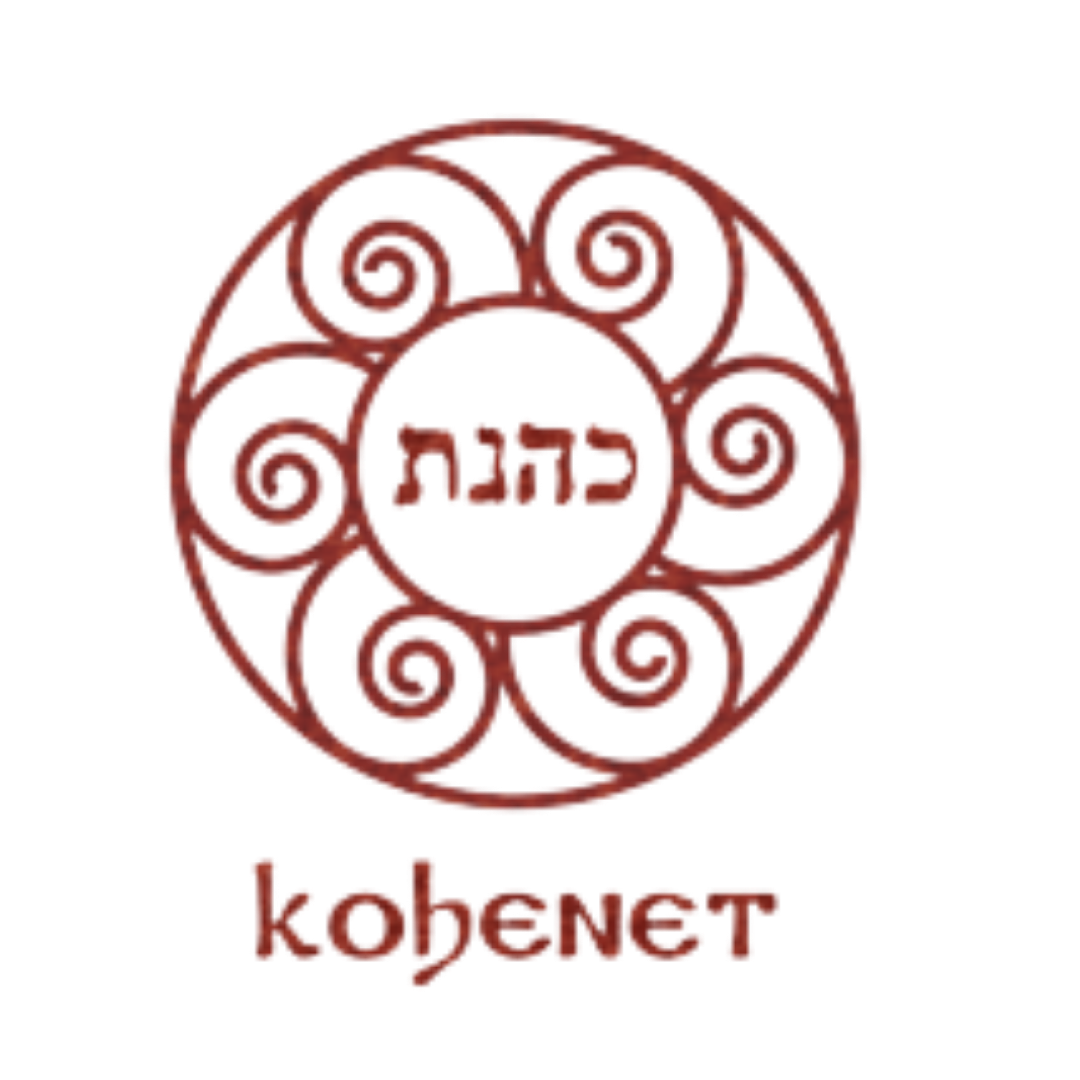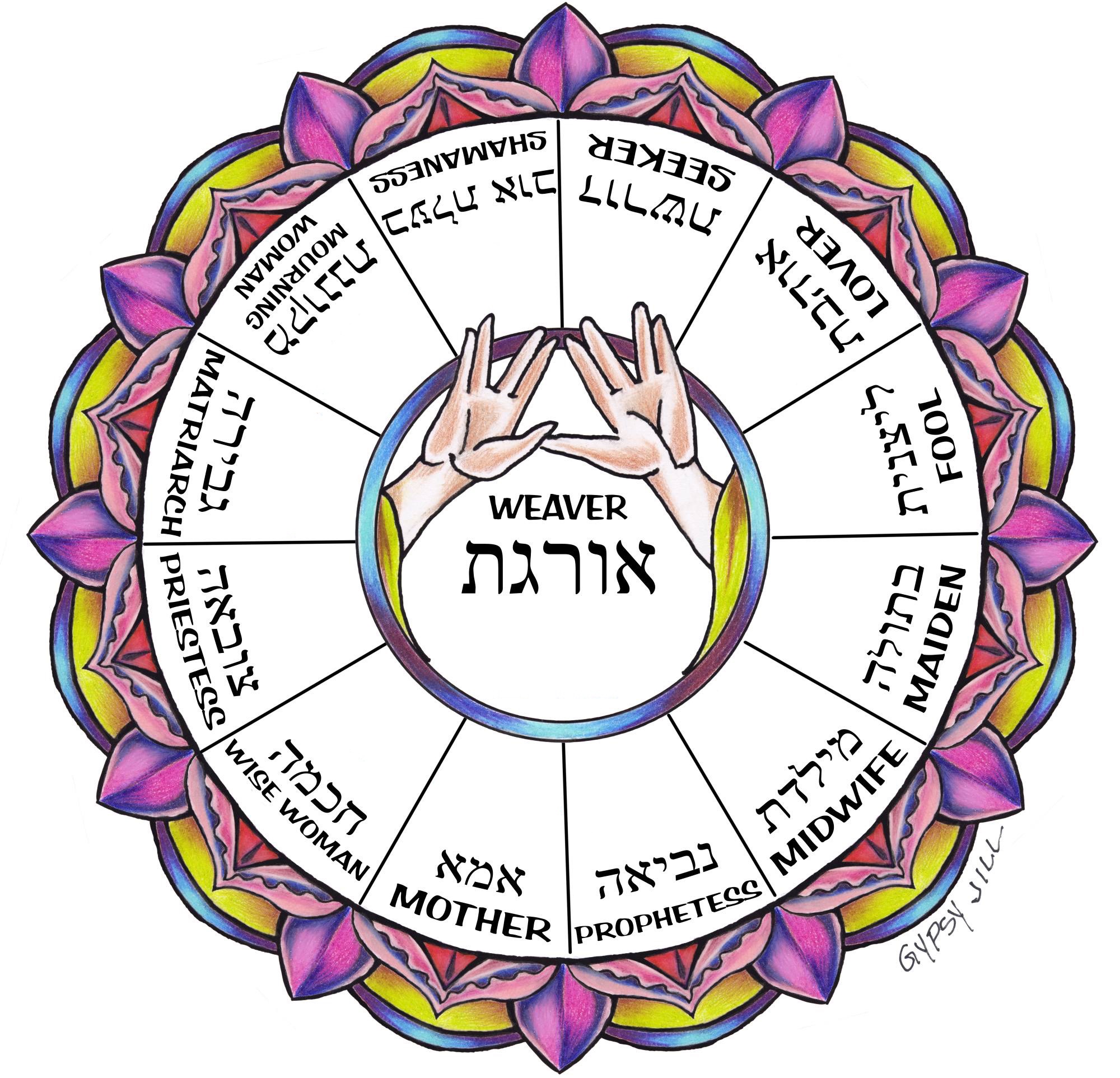Netivah (plural netivot) is a Hebrew word for path or way of being. In the book of Proverbs, we hear of Wisdom that "all her ways are pleasant, and all her paths (netivot) are peace." We use this word to refer to priestess paths: archetypes or ways of being that embody a particular form of the sacred feminine. Priestesses-in-training engage thirteen netivot of the Shekhinah.
Na'Arah: the Maiden
The Maiden is the archetype of presence, embodiment, action, dance, joy, and fellowship. The Maiden appears as Rebekah, the zealous and kind girl who draws water for a stranger and his camels, and as Miriam, who watches over a basket on the Nile. She appears as the maidens who dance at the sacred shrine of Shiloh to celebrate the harvest. And she appears as a servant of Wisdom, going out into the streets to find those who seek the Shekhinah. She is the daughters of Tzelafchad, who dare to bring their case before Moses and ask for an inheritance of land. She brings the gifts of passion, commitment, and courage.
Eim: The Mother
The Mother embodies love and sustenance. The Mother appears as Leah, the abundantly fertile matriarch, Hagar, who searches for water for her son, and as Yocheved, who hides her child from Pharaoh. She appears as Batya, who has compassion on a child not hers, and as Hannah, who prays to give birth. She is Naamah, Noah’s wife, who shepherds animals and people onto the Ark. She appears in the manna that falls on Israel and in the sea that parts to free the people from Egypt. She is the Immah Ila’ah, the Divine Mother of the world. She brings gifts of love, compassion, care, and nurturing.
Gevirah: The Queen
Gevirah means lady, queen mother, or woman warrior. The gevirah is the embodiment of strength and power, and guardianship of individuals and societies. She appears as Sarah, who bears a child at ninety and fights for his inheritance. She comes to us as the Queen of Sheba, who tells riddles to King Solomon, and as the queen mother Maacah, who honors the Goddess in spite of a state law to the contrary. She is Esther, who uses her royal authority to save her people, and Vashti, who refuses a cruel king’s request. She also appears as Judith and Yael, warrior women who fight for their people. She calls forth the gift of leadership and fierceness. The Book of Proverbs says of her: “Strength and glory are her clothing, and she laughs on the last day.”
Meyaledet: The Midwife
Meyaledet means “she who brings to birth.” The midwife is the one who aids in the birthing process. We find her in Shifrah and Puah, the midwives of Egypt who saved the Hebrew children, and in the midwives who helped Rachel and Tamar to deliver. We also find her in the Holy One who led Israel through the birth canal of the sea. She is also the teacher, the ally, and the friend. Her gifts are midwifery, gardening, healing, mentoring, and creating new projects of any type. She is linked to growth, trees, animals, and everything that springs from the earth.
Chachamah: The Wise Woman
The chachamah, the female sage, is a guide through human existence. She embodies understanding, wisdom, initiation, and the power to resolve conflicts. She appears in the wise women who spin the wool for the Tabernacle, and in the wise woman of Tekoa who advises David. She is Serach, the granddaughter of Jacob, who holds all the secrets of the Israelite tribes and tells Moses where Joseph is buried. And she is Wisdom herself. The Wise Woman brings the gifts of teaching, memory, peacemaking, storytelling, and wisdom of all kinds. We are told in the Book of Proverbs: “The wise woman builds her house.”
Mekonenet: The Mourning Woman
Jeremiah, as he mourns for his exiled people, asks that the mourning women be called to come and weep. The word mekonenet means “one who laments” but can also mean “one who makes a nest.” The mekonenet embodies the pain and truth of change. She appears as Rachel weeping for her exiled children, as the wife of Pinchas, who dies in childbirth, and as the grieving Mother Zion. She also appears in Ezekiel as the women weeping for Tammuz. She brings the gifts of comforting the bereaved, burying the dead, healing the mourners, and facing cataclysmic change.
Neviah: The Prophetess
The neviah brings with her inspiration, prophecy, and ecstatic experience. She appears in Miriam the prophet, who dances and drums by the shore of the Sea of Reeds, and in Deborah, the woman who leads the people and sings of her victories. She is in the levitical drummers who danced in Temple processions. She is also committed to justice and right action. Her gifts are music, drumming, poetry, dreaming, ecstatic practice, visioning, and the ability to speak out and be heard. She seeks truth on behalf of her people.
Tzovah: The Temple Keeper
The tzovah, or “one of many hosts of women,” once served at the entrance to the mishkan. In the Torah, we learn that the priests used the mirrors of the tzovot to make the priestly basin for handwashing. The tzovot are associated with water, with divination , with sexuality, and with the affirmation of the self. In midrash, they are the Hebrew slave women in Egypt who seduce their tired husbands with games and mirrors. We see the archetype of the tzovah in Eve, who chooses the fruit of knowledge, and Lilith, who flies away from Eden. We also find her in Ruth, the stranger who lies down with her lover on a threshing floor. We know her in the women who bake bread and pour out wine for the Queen of Heaven. The tzovah embodies the life-spirit. Her gifts are self-awareness, sensuality, the keeping of the body and the keeping of sacred space, and the performance of ritual and ceremony. She brings the sacred into earthly reality.
Ba’alat Ov: The Shamaness
To be a ba’alat ov, or the keeper of a spirit, was a forbidden practice in ancient Israel. Yet in the Bible, the Witch of Endor, a ba’alat ov, raises Samuel from the dead so that he may speak to King Saul. The ba’alat ov embodies our connection to our ancestors, our ability to journey to the other world, and our power to heal and to shift reality. We see her in the enchantresses and sorceresses the prophets condemn, and in the mother of Abaye, a Talmudic woman who is an amulet-maker and charmer. Her gifts are healing, spirit awakening and inner sight.
Doreshet: The Seeker
The Seeker is the eternal pilgrim. Her task is to move from her fixed place so that she may learn. In Genesis, we learn that Rebekah the matriarch goes to seek the Divine Presence so that she may learn why her pregnancy is so painful. The Seeker is a questioner, always asking anew why things are the way they are. She is also the interpreter and scholar, finding new ways to understand truth. The Seeker is a listener, desiring to hear the truth of others. Her gifts are questioning and listening, traveling, intellectual inquiry, pilgrimage, and dialogue work of all kinds.
Ohevet: The Lover
The woman of the Song of Songs calls out to her beloved out of deep passion and a desire to share of herself: “Let us go out to the fields!” The Lover, like the Shulammite of the Bible, reaches toward another with desire and knowing, giving both body and soul. She is innocent and wise. Her beloved may be a human being, a song, a world, the Divine, her own soul. She is grounded in her experience, yet also a priestess who embodies the cosmic love of the universe. Her gifts are openness, willingness, connection, and surrender.
Leitzanit : The Fool
When Sarah is told she will become pregnant at the age of ninety, she lets out a laugh so resonant that the Holy One takes note of it. Sarah’s laugh contains joy and heartbreak, anger and relief. So too, the fool, jester, or sacred clown uses laughter to help us confront life’s difficult truths. She makes fun of accepted truths and says what no one else dares to say. She dances at weddings, reminding us of death; and at painful times her humor keeps us going. Her gifts are laughter, cleverness, fearlessness, and perfect honesty.
Oreget: The Weaver
The Weaver weaves in the Temple to honor the Divine feminine. What she weaves are batim or “houses”—tapestries, garments, or maybe worlds. Like the Fates, the oreget weaves space, time, and soul together. She embodies the connectedness of all things. It is she who integrates and connects the many threads of the world. We see her in the women who spun the goats’ hair for the Tabernacle. Her gifts are the weaving of legends, interpretations, rituals and traditions, as well as weaving, sewing, writing, and all the creative arts. She watches over all activities that bring disparate elements together.




